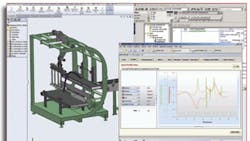Three ways to reduce design time
Getting a machine to market faster ultimately helps improve the bottom line, so machine builders often try to save valuable time in the design phase.
Other pressures also spur machine builders to simplify their design processes: End users are demanding more efficient machines that adapt to market changes and integrate with up and downstream operations. Global competition and regulations, meanwhile, pressure manufacturers to be more responsive and transparent.
Three timesavers help machine builders meet these challenges: a mechatronic design approach, the EtherNet/IP network, and Accelerators.
- Optimize approach using mechatronics
Rockwell Automation defines mechatronics as a multidiscipline design approach relying on collaborative application of motion design software and products. Mechanical, electrical, and control engineers working in parallel helps develop optimized machines more quickly.
A mechatronic approach also reduces design time through virtual prototyping early in the design process. Engineers can enter design information in a familiar software environment to understand how their decisions affect the overall system, and quickly evaluate alternatives.
A common setback at the end of the design process is finding that the mechanical system fails to meet dynamic performance requirements. For example, a mechanical engineer selecting a coupling to attach the motor to the load is actually making a mechatronic decision — because coupling stiffness affects dynamic load-mechanism performance. Motion Analyzer, mechatronic design software from Rockwell Automation, allows engineers to verify commanded versus actual velocity and select tuning gains to meet application performance needs. Many times, engineers find they must go back and choose a stiffer coupling. Identifying the limitation in a virtual environment allows faster resolution of the issue. Motion Analyzer is available for free at ab.rockwellautomation.com/motion-control/motion-analyzer-software.
- Simplify the network with EtherNet/IP
Industrial Ethernet is another timesaver machine builders are using to cut design time. Previously, multi-tiered network strategies were a necessity, as each application, from motion to safety, required its own dedicated network. By switching to a standard network architecture, machine builders can reduce engineering time, integration risks, and Total Cost to Design, Develop and Deliver machines.
EtherNet/IP is the only established industrial protocol designed to connect from the instrumentation level all the way up to the end customer's IT infrastructure, and across applications, including discrete, process, safety, motion, and drive control. Built on standard TCP/IP technology, it is the world's leading industrial Ethernet network. In contrast to other networks, EtherNet/IP uses time synchronization, a more efficient way to get the performance and precision that motion control demands.
In addition, EtherNet/IP offers security and network segmentation that meets the needs of machine builders and end users. It also allows machine builders the opportunity to easily add secure remote services that can differentiate them from their competitors.
- Focus with accelerators
For motion applications, the Drives and Motors Accelerator Toolkit (DMAT) can help users speed up application development using Rockwell Automation equipment, especially PowerFlex AC Drives and Kinetix servo drives.
The tools and templates (on one free DVD) assist in selecting components, drawing designs, writing application code, laying out HMI screens, and starting machines.
DMAT is designed to address mundane, time-consuming tasks — to free machine builders to focus on designing unique features and differentiating their machine.
Users have reported design time savings of up to 50% by using the DMAT's simplified programming/configuration modular structure, checklists, and step-by-step instructions. For more information and sample downloads, visit ab.com/go/iatools.
Total Cost to Design, Develop and Deliver, PowerFlex and Kinetix are trademarks of Rockwell Automation Inc. EtherNet/IP is a trademark of ODVA.
